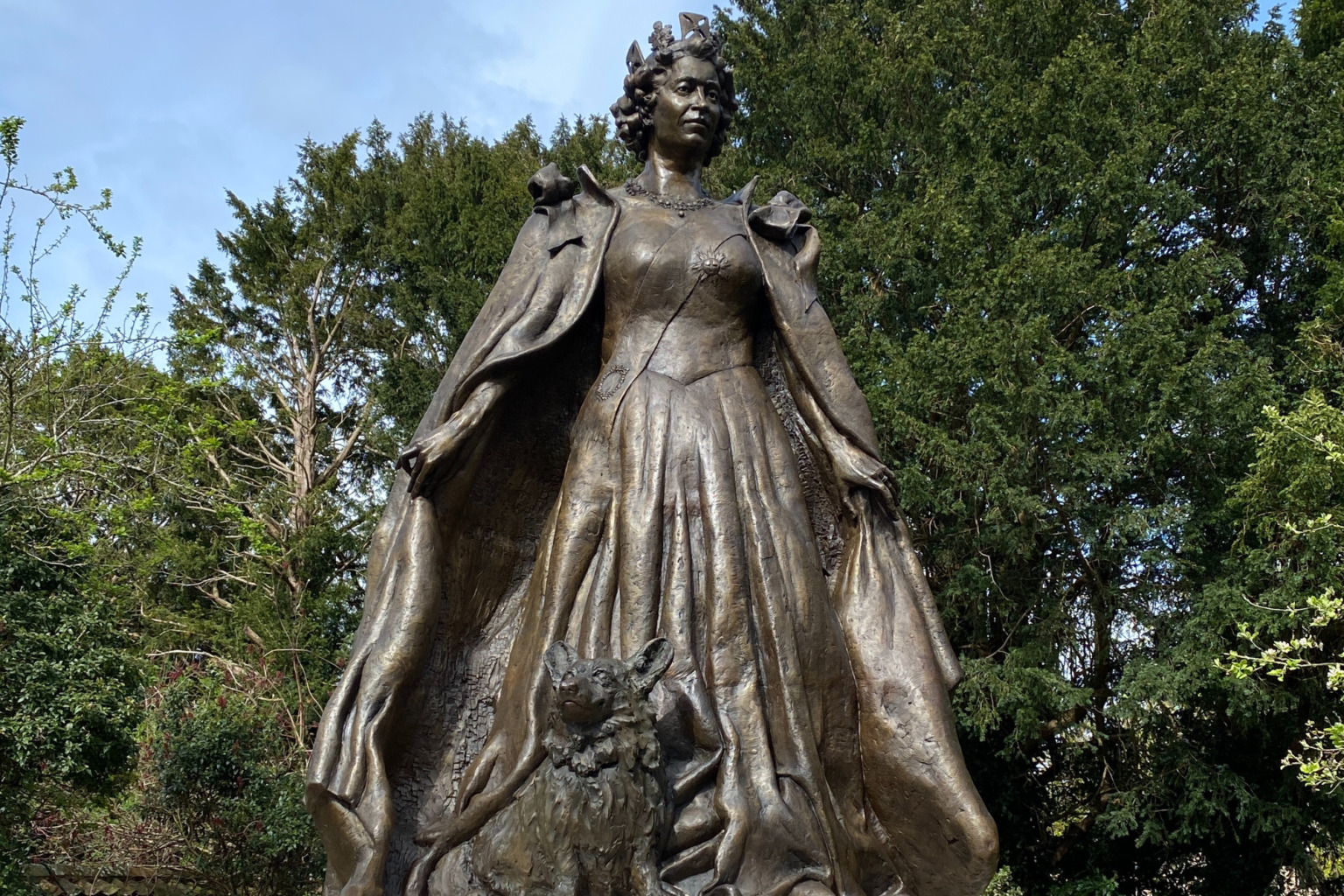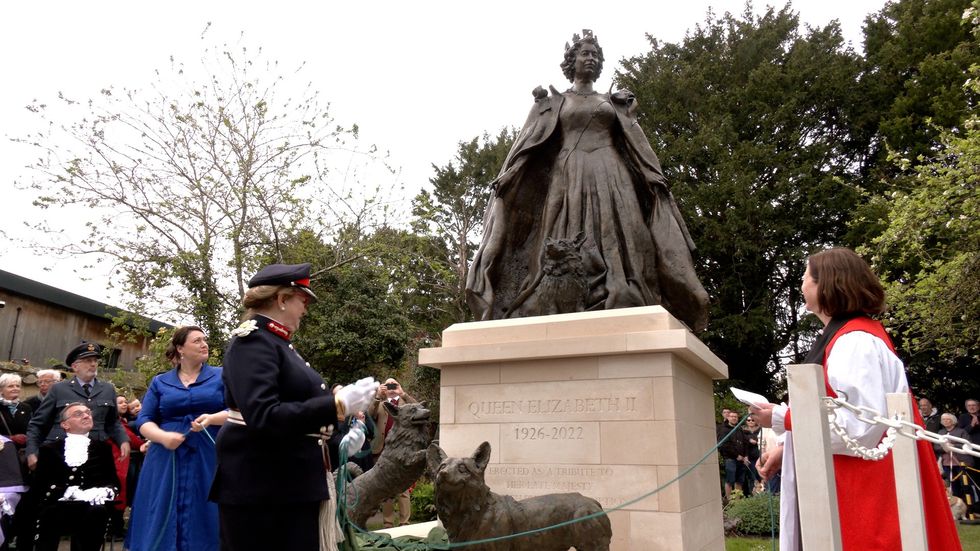Rutland Queen Statue: A Majestic Monument Of History And Culture
The Rutland Queen Statue stands as a symbol of historical significance, artistry, and cultural heritage in the heart of Rutland County. This remarkable piece of art not only captivates visitors but also serves as an important landmark that reflects the rich history of the region. In this article, we will explore the fascinating story behind the statue, its architectural design, cultural importance, and the legacy it leaves behind.
Located in the picturesque landscapes of Rutland, this statue has become a focal point for tourists, historians, and art enthusiasts alike. Its intricate design and detailed craftsmanship make it a masterpiece worth exploring. As we delve deeper into the history and significance of the Rutland Queen Statue, we will uncover the stories and legends that have contributed to its enduring appeal.
Join us on this journey as we uncover the mysteries and marvels of the Rutland Queen Statue. From its creation to its current status as a cultural icon, this article aims to provide a comprehensive understanding of why this statue is a must-see for anyone visiting Rutland County.
Read also:Hoarders Bedroom Understanding The Challenges And Finding Solutions
Table of Contents
- The History of Rutland Queen Statue
- Biography of the Queen
- Architectural Design and Materials
- Cultural and Historical Significance
- Location and Accessibility
- Controversies Surrounding the Statue
- Efforts for Preservation
- Impact on Local Tourism
- Future Plans and Developments
- Conclusion
The History of Rutland Queen Statue
Origins and Creation
The Rutland Queen Statue was conceived in the early 19th century as a tribute to Queen Elizabeth I, a monarch whose reign left an indelible mark on British history. Designed by renowned sculptor John Rutland, the statue took over three years to complete, with meticulous attention to detail. The project was funded by local patrons who recognized the importance of honoring the queen's legacy in their community.
Key Historical Events
Throughout its existence, the statue has witnessed several pivotal moments in history. During World War II, it served as a rallying point for soldiers and civilians alike, symbolizing resilience and strength. In the 1970s, the statue underwent significant restoration work to preserve its original grandeur. Below are some key events associated with the statue:
- 1825: Initial design and construction began.
- 1828: Statue unveiled to the public.
- 1942: Used as a symbol of hope during wartime.
- 1975: Major restoration completed.
Biography of the Queen
Queen Elizabeth I, the subject of the Rutland Queen Statue, reigned from 1558 to 1603 and is often regarded as one of England's greatest monarchs. Her leadership during the Elizabethan era brought about significant advancements in arts, exploration, and governance. Below is a brief overview of her life:
| Full Name | Elizabeth Tudor |
|---|---|
| Birthdate | 7 September 1533 |
| Death | 24 March 1603 |
| Reign | 1558-1603 |
| Notable Achievements | Establishment of the English Protestant Church, promotion of the arts, and expansion of British influence. |
Architectural Design and Materials
Artistic Style
The Rutland Queen Statue exemplifies the neoclassical style of sculpture, characterized by its symmetry, proportion, and emphasis on classical themes. The statue stands at an impressive height of 12 feet, depicting Queen Elizabeth I in full regalia, complete with a crown and scepter.
Materials Used
Constructed from high-quality limestone sourced locally, the statue was chosen for its durability and ability to withstand the elements. The base of the statue is made from granite, providing a sturdy foundation for the intricate carving above.
Cultural and Historical Significance
The Rutland Queen Statue holds immense cultural and historical value, serving as a reminder of the region's ties to the monarchy and its contributions to British history. It has been the subject of numerous academic studies and is frequently featured in cultural exhibitions across the country.
Read also:April Perron The Remarkable Journey Of A Resilient Activist
Location and Accessibility
Located in the heart of Rutland County, the statue is easily accessible by both road and public transport. Visitors can enjoy a leisurely walk through the surrounding parklands, which offer breathtaking views of the surrounding countryside. Parking facilities are available nearby, making it convenient for tourists to visit.
Controversies Surrounding the Statue
Debates Over Representation
Like many historical monuments, the Rutland Queen Statue has faced criticism regarding its representation of colonial power and monarchy. Some argue that it glorifies a period of history that was marked by oppression and inequality. However, supporters maintain that the statue is an important educational tool that helps contextualize the past.
Public Opinion
A recent survey conducted by the Rutland Historical Society found that 72% of residents support the preservation of the statue, while 28% believe it should be recontextualized to reflect modern values. This ongoing debate highlights the complexities of preserving historical monuments in contemporary society.
Efforts for Preservation
To ensure the longevity of the Rutland Queen Statue, various conservation efforts have been undertaken over the years. These include regular cleaning, structural reinforcement, and protective coatings to prevent weathering. Local authorities have also implemented measures to monitor the statue's condition and address any issues promptly.
Impact on Local Tourism
The Rutland Queen Statue has become a major attraction for tourists visiting the county. It draws visitors from all over the world, contributing significantly to the local economy. In 2022 alone, the statue attracted over 200,000 visitors, generating an estimated revenue of $5 million for the region. This highlights the statue's importance as a cultural and economic asset.
Future Plans and Developments
Upcoming Projects
Plans are underway to enhance the visitor experience around the Rutland Queen Statue. This includes the development of an interactive museum showcasing the history of the statue and its significance. Additionally, there are proposals to create walking tours that incorporate the statue as part of a broader exploration of Rutland's historical landmarks.
Community Engagement
Efforts are being made to involve the local community in the preservation and promotion of the statue. Workshops, lectures, and educational programs are being organized to raise awareness and foster a deeper appreciation for the statue's cultural value.
Conclusion
The Rutland Queen Statue is more than just a piece of art; it is a testament to the rich history and cultural heritage of Rutland County. From its creation to its current status as a cultural icon, the statue continues to inspire and educate visitors from around the world. As we look to the future, it is crucial that we preserve this monument for generations to come.
We invite you to visit the Rutland Queen Statue and experience its grandeur firsthand. Share your thoughts and experiences in the comments below, and don't forget to explore other articles on our site for more fascinating insights into history and culture.
Data Source: Rutland Historical Society, Encyclopedia Britannica


